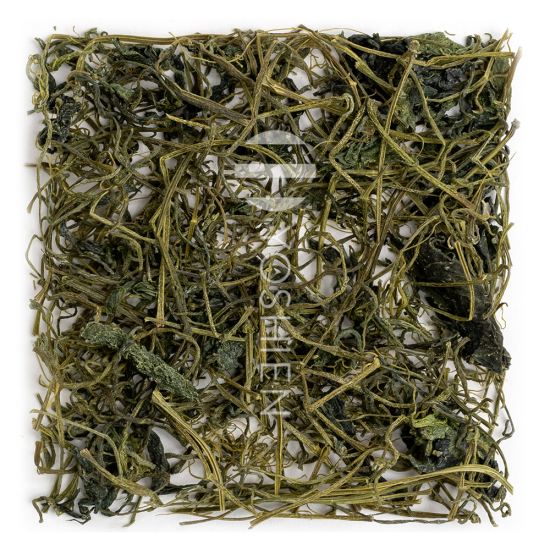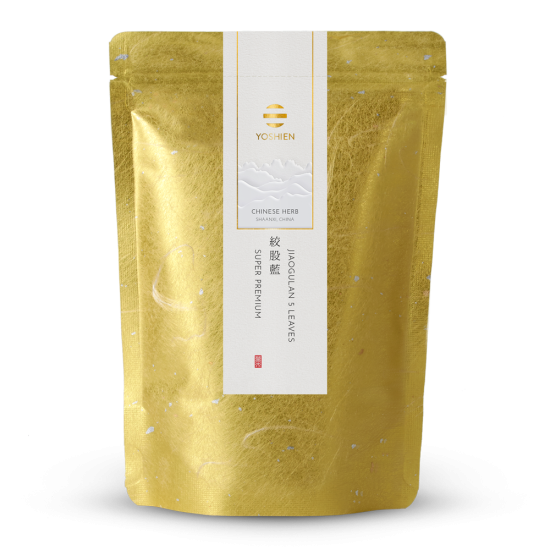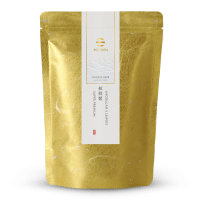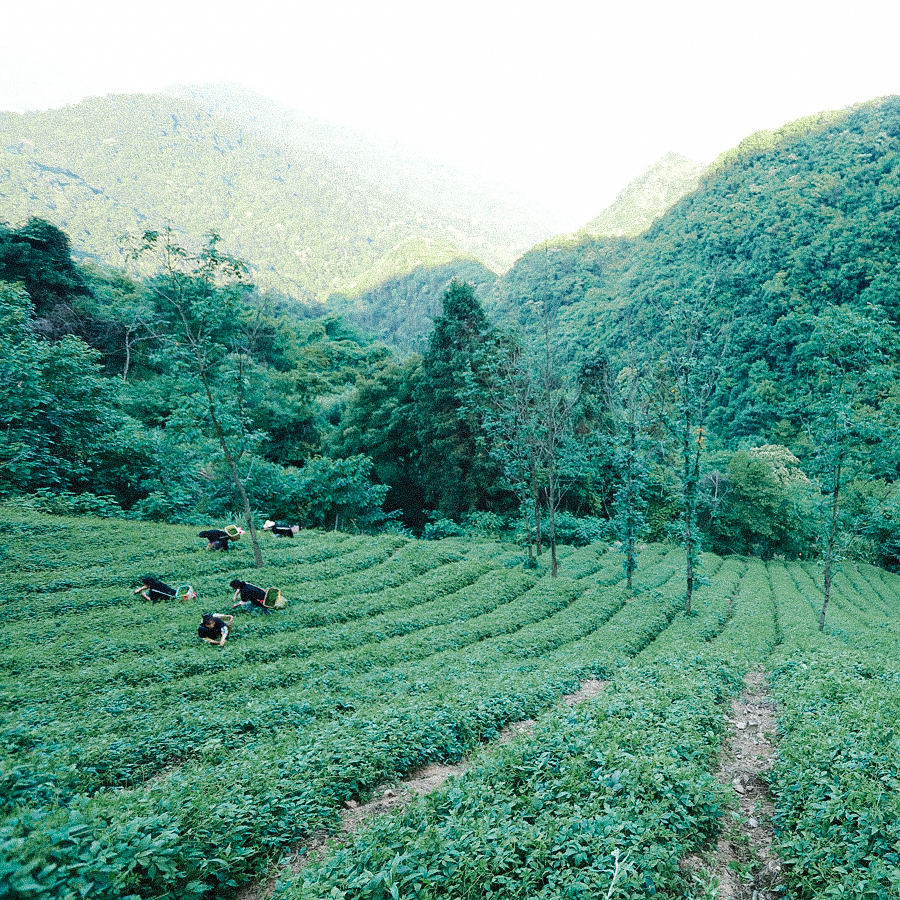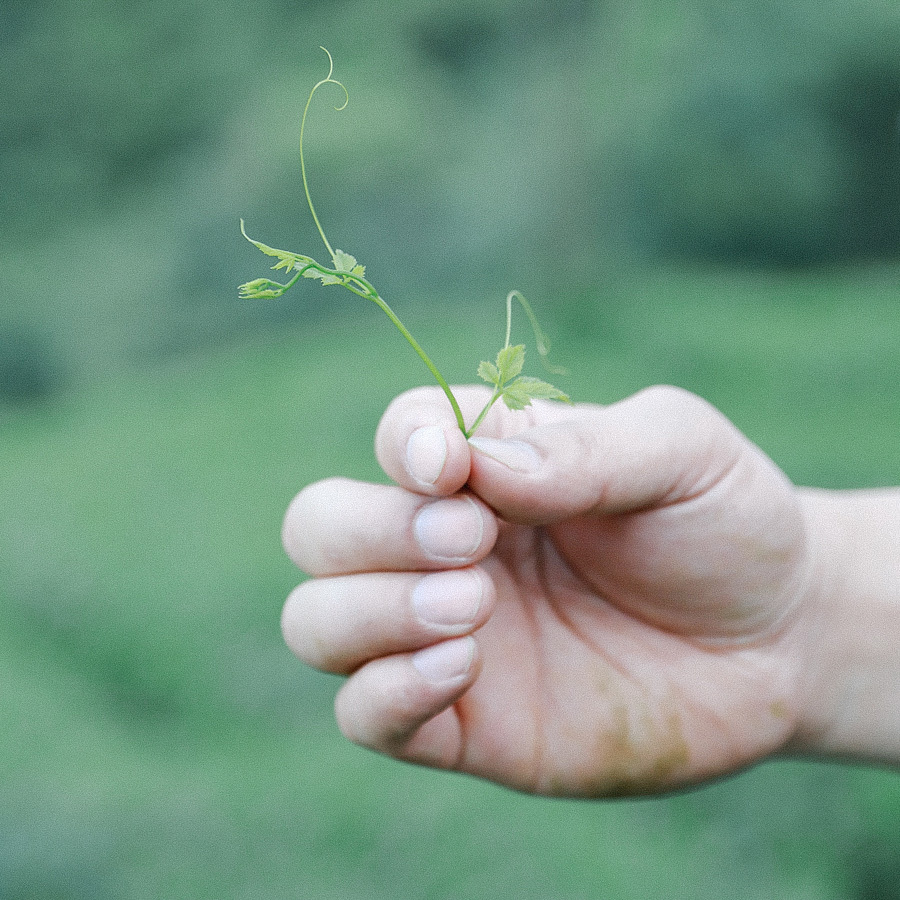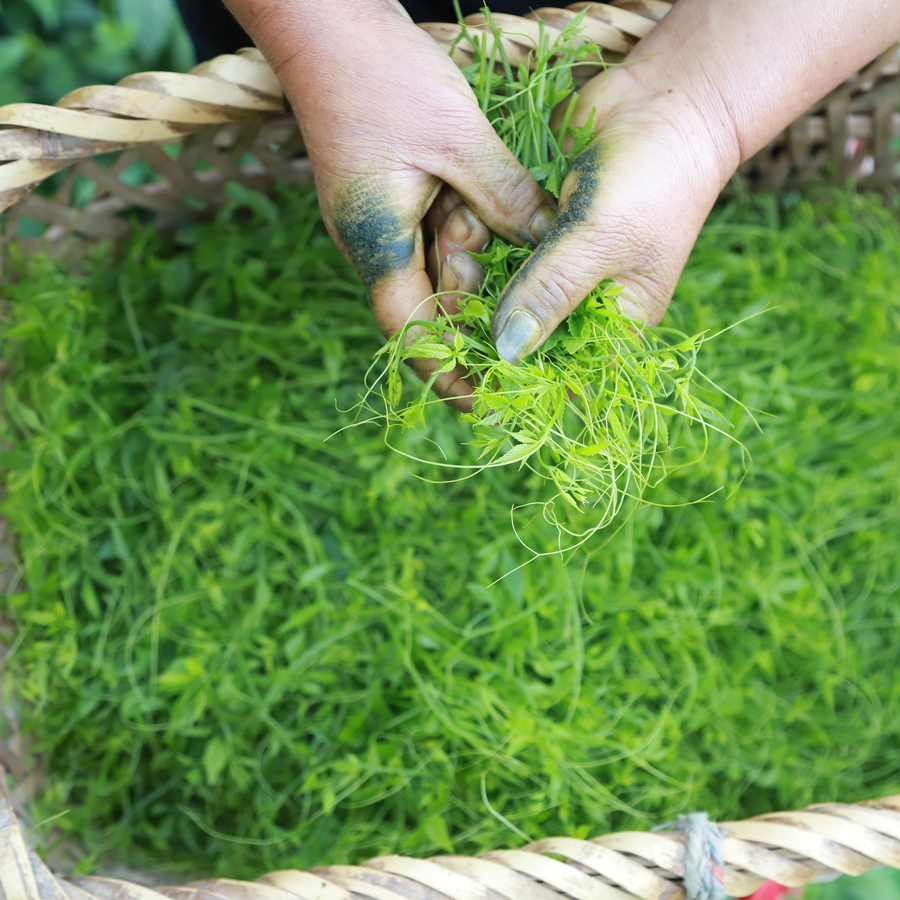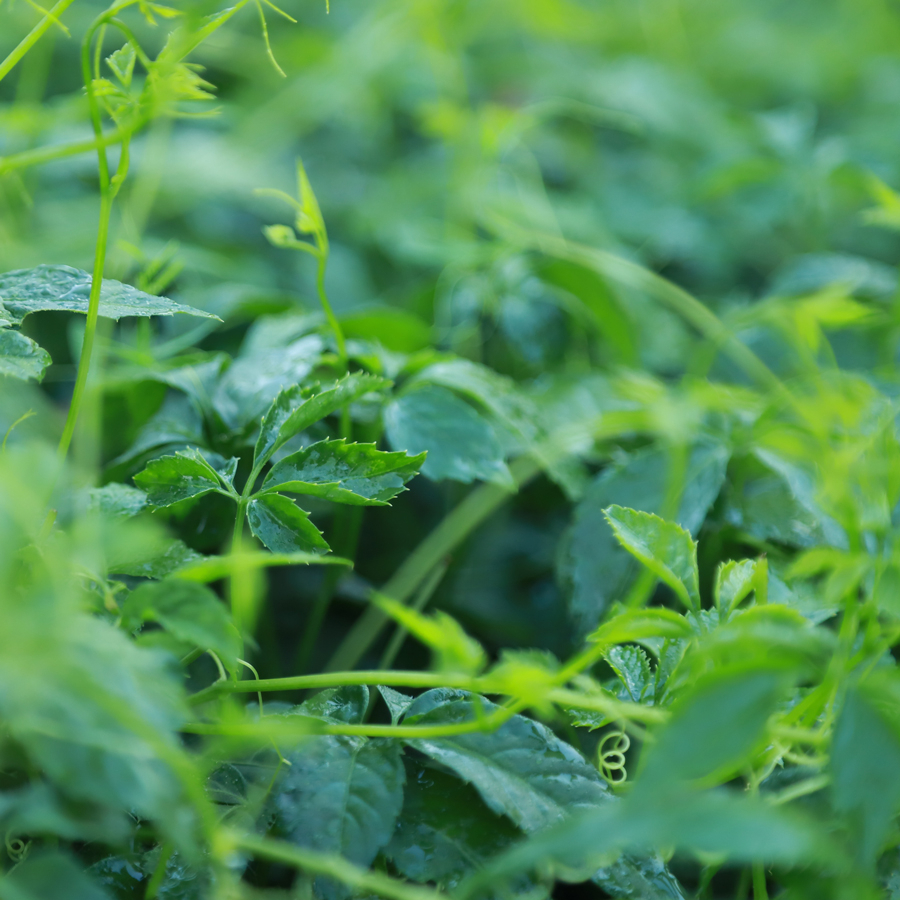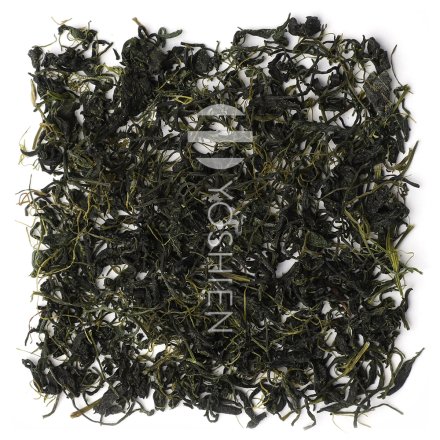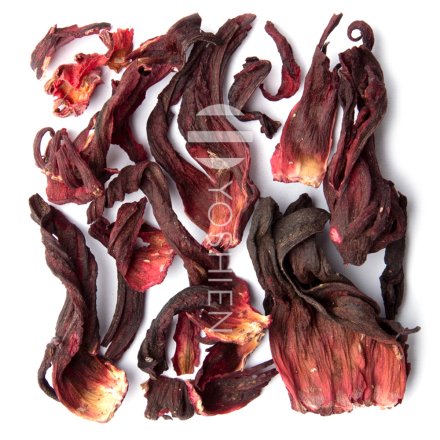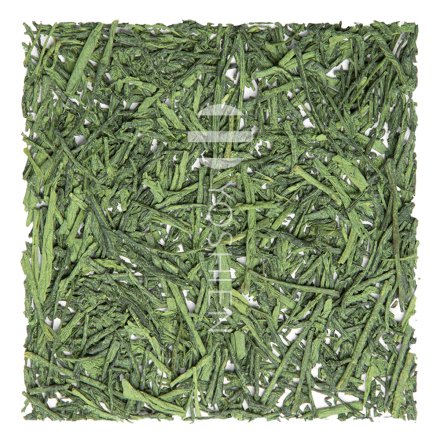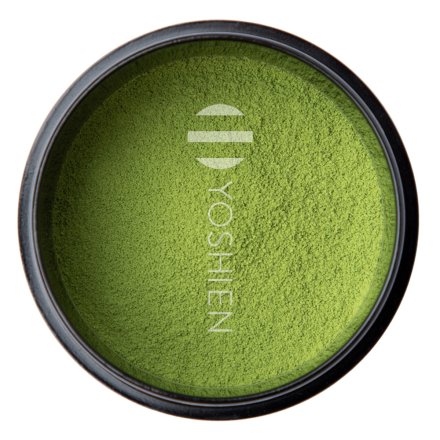The Jiaogulan plants grow at an elevation of 1,000m on the sunny southern slopes of the Qin Ling Mountains, surrounded by idyllic deciduous forests.
Jiaogulan is traditionally harvested twice per year in China: in April during the spring harvest, and again in November for the autumn harvest. The first harvest yields especially aromatic, delicate leaves that are superior to those of the autumnal harvest in terms of quality. Ideal geographical conditions, including alternating weather patterns and the thinner atmosphere at 1000 metres, contribute to the plant’s remarkable vitality. The slow, natural growth allows the plants to absorb abundant nutrients from the humus- and phosphorus-rich soil, resulting in particularly fragrant leaves.
For our Jiaogulan, the herbs are carefully hand-harvested in April and then laid out in withering troughs. It is at this early stage that the foundation for a premium end product is set. The farmers meticulously ensure that the herbs are spread in a very thin layer to guarantee even withering. Throughout this phase, the herbs are gently turned at regular intervals. Improper layering (e.g. too thick or not regularly loosened) would trap heat and moisture, leading to browning and an unsightly appearance of the leaves.
Following the withering comes a key step in traditional Chinese processing: heat treatment, known as Qing Gu (青鍋) or “kill green”. Unlike many other Chinese herbs, Jiaogulan is not pan-roasted but briefly steamed using hot water vapour. This stage also demonstrates the farmers’ long-standing experience and deep connection with Jiaogulan, as they know precisely the timing and proportions required.
In the next stage, the plants are dried in the open air on bamboo sieves, then rolled. Rolling gives the jiaogulan its distinctive curled shape and helps release the essential aromatic oils in the leaves and stems. A final indoor drying phase follows, after which the herbs are sorted and graded into different quality levels.
Single Origin
Our Jiaogulan comes 100% from the above-mentioned farm cooperative in the Qin Ling Mountains.



